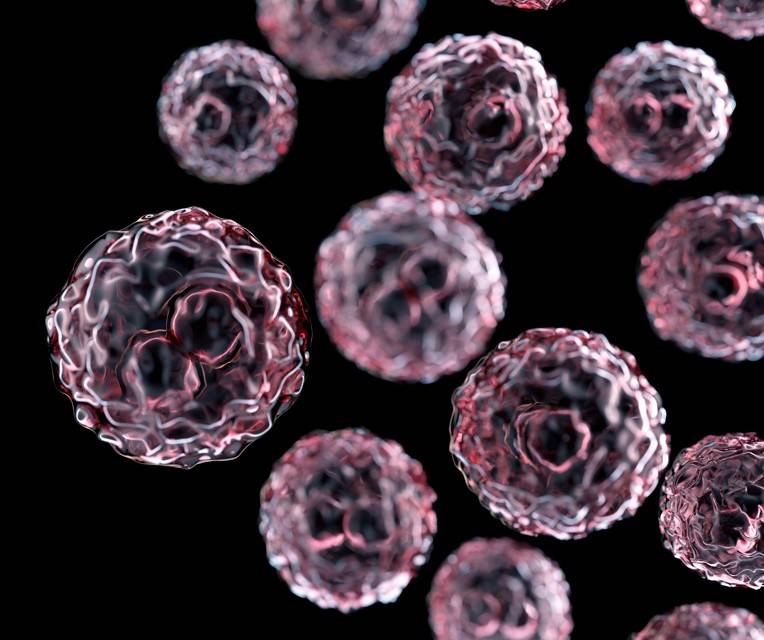Decades of research have found and validated many anesthetic agents that allow for life-saving procedures, including but not limited to propofol, nitrous oxide, sevoflurane, isoflurane, desflurane, halothane, ketamine, etomidate, opioids, barbiturates, xenon, and lidocaine.1,2,3 Despite the time, effort, and financial resources that have been pooled into anesthetic research, anesthesia administration continues to carry some risks. Some scientists seek to further improve the field of anesthesia through the development and application of nanotherapeutics.
Nanotechnology is an intriguing new domain that stands to revolutionize the field of medicine. Nanoparticles ranging from 1-100 nm are being designed for use in diagnostic assessments, therapeutic interventions, and biomedical research tools. Through nanotechnology applications such as nanotubes, quantum dots, liposomes, and magnetized nanoprobes, clinicians can provide therapy at the molecular level.4 Nanostructures have been used to prevent and treat different forms of neurotoxicity, nephrotoxicity, and hepatotoxicity.5,6,7
Given the severity and frequency of anesthesia-related complications, several research efforts have explored the prospect of employing nanotherapeutics to manage such complexities.
Propofol is a commonly administered intravenous anesthetic that has a high lipophilic nature and strong alkalinity. To accommodate this, Diprivan, a commercially available lipid emulsion, is often conjointly administered. However, administration of Diprivan often results in injection pain due to the increase of free propofol concentration, an increased risk of hyperlipidemia, and higher susceptibility to microbial contamination.8 In 2019, a group of researchers set out to tackle these challenges and developed a nanostructured lipid carrier (NLC) for propofol using a central composite design. This novel NLC formulation exhibited a stable globule size and zeta potential, indicating its potential as a storage mechanism. Free propofol was also found to be 40% less in murine subjects following NLC injection compared to Diprivan. The NLC also demonstrated favorable attributes such as a reduced risk of hyperlipidemia, improved long-term storage capability, and antimicrobial properties.8,9
Another frequently used anesthetic agent is etomidate, a highly hydrophobic drug with a favorable therapeutic index for single-bolus administration.10 Administration of etomidate can also increase the risk of microbial contamination. In their 2021 in vitro study, Qiu et. al. devised a twin-tailed peptide called APK that forms self-assembling nanoparticles, nanosheets, and/or nanofibers to encapsulate hydrophobic drugs such as etomidate. With its cationic amphiphilic nature and nanofiber structure, etomidate-encapsulated APK can disrupt microbial membranes and inhibit microbial movement, giving the new molecule potent antimicrobial properties.11
Overdose of anesthetic drugs can wreak havoc on the body, causing systemic toxicity, including cardiorespiratory arrest and CNS dysfunction. The field of nanomedicine has recently introduced nano-antidotes, which are designed to retrieve or contain overdosed anesthetics.8 Lipid emulsions (LE), intravenous administrations of nanoscale oil-in-water droplets, are recommended for the treatment of lipophilic drug overdose. Following LE, excess lipophilic drug molecules from anesthetic agents are drawn to the nanoscale oil droplets of the LE. Once the drug molecules are encapsulated by the LE, their pharmacokinetic features will change, resulting in their accumulation in tissues like the liver or muscle rather than the bloodstream. Such redistribution helps to reduce the toxic effects of excess anesthesia molecules on more critical organs, such as the heart or lungs.12
With the advance of modern technology, nanotherapeutics show potential in controlling the effects of anesthesia. Given its novelty, further research is essential to establish nanomedicine as an accepted therapeutic option in clinical settings.
References
- Pavel, Mahmud Arif, et al. “Studies on the Mechanism of General Anesthesia.” Proceedings of the National Academy of Sciences, vol. 117, no. 24, June 2020, pp. 13757–66. https://doi.org/10.1073/pnas.2004259117
- Guyo, G. A., et al. “Anesthesia Effects in Rat Electrocorticograms Characterized Using Detrended Fluctuation Analysis and Its Extension.” The European Physical Journal Special Topics, vol. 233, no. 3, May 2024, pp. 463–70. https://doi.org/10.1140/epjs/s11734-023-01053-7
- Longnecker, D., Mackey, S., Newman, M., Sandberg, W., Zapol, W., Anesthesiology, McGraw-Hill Education, New York, NY, USA, 2018
- Surendiran, A., et al. “Novel Applications of Nanotechnology in Medicine.” The Indian Journal of Medical Research, vol. 130, no. 6, Dec. 2009, pp. 689–701
- Markowicz-Piasecka, Magdalena, et al. “Current Approaches to Facilitate Improved Drug Delivery to the Central Nervous System.” European Journal of Pharmaceutics and Biopharmaceutics, vol. 181, Dec. 2022, pp. 249–62. https://doi.org/10.1016/j.ejpb.2022.11.003
- Böttger, Roland, et al. “Lipid-Based Nanoparticle Technologies for Liver Targeting.” Advanced Drug Delivery Reviews, vol. 154–155, Jan. 2020, pp. 79–101. https://doi.org/10.1016/j.addr.2020.06.017
- Geo, Hui Nee, et al. “Renal Nano-Drug Delivery for Acute Kidney Injury: Current Status and Future Perspectives.” Journal of Controlled Release, vol. 343, Mar. 2022, pp. 237–54. https://doi.org/10.1016/j.jconrel.2022.01.033
- Lu, Bin, et al. “Nanotherapeutics for Alleviating Anesthesia‐Associated Complications.” Advanced Science, vol. 11, no. 15, Apr. 2024, p. 2308241. https://doi.org/10.1002/advs.202308241
- Shevalkar, Ganesh, et al. “Nanostructured Lipid Carrier of Propofol: A Promising Alternative to Marketed Soybean Oil–Based Nanoemulsion.” AAPS PharmSciTech, vol. 20, no. 5, July 2019, p. 201. https://doi.org/10.1208/s12249-019-1408-x
- Forman, Stuart A., and David S. Warner. “Clinical and Molecular Pharmacology of Etomidate.” Anesthesiology, vol. 114, no. 3, Mar. 2011, pp. 695–707. https://doi.org/10.1097/ALN.0b013e3181ff72b5
- Peng, Fei, et al. “Facile Design of Gemini Surfactant-like Peptide for Hydrophobic Drug Delivery and Antimicrobial Activity.” Journal of Colloid and Interface Science, vol. 591, June 2021, pp. 314–25. https://doi.org/10.1016/j.jcis.2021.02.019
- Li, Zhi, et al. “Prediction of Drug Capturing by Lipid Emulsions in Vivo for the Treatment of a Drug Overdose.” Journal of Controlled Release, vol. 346, June 2022, pp. 148–57. https://doi.org/10.1016/j.jconrel.2022.04.011





Recent Comments